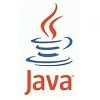【核心技术】Apache Flink CDC 批流融合技术原理分析
8月份 FlinkCDC 发布2.0.0版本,相较于1.0版本,在全量读取阶段支持分布式读取、支持checkpoint,且在全量 + 增量读取的过程在不锁表的情况下保障数据一致性。 详细介绍参考 Flink CDC 2.0 正式发布,详解核心改进。
Flink CDC2.0 数据读取逻辑并不复杂,复杂的是 FLIP-27: Refactor Source Interface 的设计及对Debezium Api的不了解。本文重点对 Flink CDC 的处理逻辑进行介绍, FLIP-27 的设计及 Debezium 的API调用不做过多讲解。
本文先以Flink SQL 案例来介绍Flink CDC2.0的使用,接着介绍CDC中的核心设计包含切片划分、切分读取、增量读取,最后对数据处理过程中涉及flink-mysql-cdc 接口的调用及实现进行代码讲解。
案例
全量读取+增量读取 Mysql表数据,以changelog-json 格式写入kafka,观察 RowKind 类型及影响的数据条数。
public static void main(String[] args) {
StreamExecutionEnvironment env = StreamExecutionEnvironment.getExecutionEnvironment();
EnvironmentSettings envSettings = EnvironmentSettings.newInstance()
.useBlinkPlanner()
.inStreamingMode()
.build();
env.setParallelism(3);
// note: 增量同步需要开启CK
env.enableCheckpointing(10000);
StreamTableEnvironment tableEnvironment = StreamTableEnvironment.create(env, envSettings);
tableEnvironment.executeSql(" CREATE TABLE demoOrders (\n" +
" `order_id` INTEGER ,\n" +
" `order_date` DATE ,\n" +
" `order_time` TIMESTAMP(3),\n" +
" `quantity` INT ,\n" +
" `product_id` INT ,\n" +
" `purchaser` STRING,\n" +
" primary key(order_id) NOT ENFORCED" +
" ) WITH (\n" +
" 'connector' = 'mysql-cdc',\n" +
" 'hostname' = 'localhost',\n" +
" 'port' = '3306',\n" +
" 'username' = 'cdc',\n" +
" 'password' = '123456',\n" +
" 'database-name' = 'test',\n" +
" 'table-name' = 'demo_orders'," +
// 全量 + 增量同步
" 'scan.startup.mode' = 'initial' " +
" )");
tableEnvironment.executeSql("CREATE TABLE sink (\n" +
" `order_id` INTEGER ,\n" +
" `order_date` DATE ,\n" +
" `order_time` TIMESTAMP(3),\n" +
" `quantity` INT ,\n" +
" `product_id` INT ,\n" +
" `purchaser` STRING,\n" +
" primary key (order_id) NOT ENFORCED " +
") WITH (\n" +
" 'connector' = 'kafka',\n" +
" 'properties.bootstrap.servers' = 'localhost:9092',\n" +
" 'topic' = 'mqTest02',\n" +
" 'format' = 'changelog-json' "+
")");
tableEnvironment.executeSql("insert into sink select * from demoOrders");}全量数据输出:
{"data":{"order_id":1010,"order_date":"2021-09-17","order_time":"2021-09-22 10:52:12.189","quantity":53,"product_id":502,"purchaser":"flink"},"op":"+I"}
{"data":{"order_id":1009,"order_date":"2021-09-17","order_time":"2021-09-22 10:52:09.709","quantity":31,"product_id":500,"purchaser":"flink"},"op":"+I"}
{"data":{"order_id":1008,"order_date":"2021-09-17","order_time":"2021-09-22 10:52:06.637","quantity":69,"product_id":503,"purchaser":"flink"},"op":"+I"}
{"data":{"order_id":1007,"order_date":"2021-09-17","order_time":"2021-09-22 10:52:03.535","quantity":52,"product_id":502,"purchaser":"flink"},"op":"+I"}
{"data":{"order_id":1002,"order_date":"2021-09-17","order_time":"2021-09-22 10:51:51.347","quantity":69,"product_id":503,"purchaser":"flink"},"op":"+I"}
{"data":{"order_id":1001,"order_date":"2021-09-17","order_time":"2021-09-22 10:51:48.783","quantity":50,"product_id":502,"purchaser":"flink"},"op":"+I"}
{"data":{"order_id":1000,"order_date":"2021-09-17","order_time":"2021-09-17 17:40:32.354","quantity":30,"product_id":500,"purchaser":"flink"},"op":"+I"}
{"data":{"order_id":1006,"order_date":"2021-09-17","order_time":"2021-09-22 10:52:01.249","quantity":31,"product_id":500,"purchaser":"flink"},"op":"+I"}
{"data":{"order_id":1005,"order_date":"2021-09-17","order_time":"2021-09-22 10:51:58.813","quantity":69,"product_id":503,"purchaser":"flink"},"op":"+I"}
{"data":{"order_id":1004,"order_date":"2021-09-17","order_time":"2021-09-22 10:51:56.153","quantity":50,"product_id":502,"purchaser":"flink"},"op":"+I"}
{"data":{"order_id":1003,"order_date":"2021-09-17","order_time":"2021-09-22 10:51:53.727","quantity":30,"product_id":500,"purchaser":"flink"},"op":"+I"}## 更新 1005 的值
{"data":{"order_id":1005,"order_date":"2021-09-17","order_time":"2021-09-22 02:51:58.813","quantity":69,"product_id":503,"purchaser":"flink"},"op":"-U"}
{"data":{"order_id":1005,"order_date":"2021-09-17","order_time":"2021-09-22 02:55:43.627","quantity":80,"product_id":503,"purchaser":"flink"},"op":"+U"}
## 删除 1000
{"data":{"order_id":1000,"order_date":"2021-09-17","order_time":"2021-09-17 09:40:32.354","quantity":30,"product_id":500,"purchaser":"flink"},"op":"-D"}核心设计
切片划分
全量阶段数据读取方式为分布式读取,会先对当前表数据按主键划分成多个Chunk,后续子任务读取Chunk 区间内的数据。根据主键列是否为自增整数类型,对表数据划分为均匀分布的Chunk及非均匀分布的Chunk。
均匀分布
主键列自增且类型为整数类型(int,bigint,decimal)。查询出主键列的最小值,最大值,按 chunkSize 大小将数据均匀划分,因为主键为整数类型,根据当前chunk 起始位置、chunkSize大小,直接计算chunk 的结束位置。
// 计算主键列数据区间
select min(`order_id`), max(`order_id`) from demo_orders;
// 将数据划分为 chunkSize 大小的切片
chunk-0: [min,start + chunkSize)
chunk-1: [start + chunkSize, start + 2chunkSize)
.......
chunk-last: [max,null)非均匀分布
主键列非自增或者类型为非整数类型。主键为非数值类型,每次划分需要对未划分的数据按主键进行升序排列,取出前 chunkSize 的最大值为当前 chunk 的结束位置。
// 未拆分的数据排序后,取 chunkSize 条数据取最大值,作为切片的终止位置。
chunkend = SELECT MAX(`order_id`) FROM (
SELECT `order_id` FROM `demo_orders`
WHERE `order_id` >= [前一个切片的起始位置]
ORDER BY `order_id` ASC
LIMIT [chunkSize]
) AS T全量切片数据读取
Flink 将表数据划分为多个Chunk,子任务在不加锁的情况下,并行读取 Chunk数据。因为全程无锁在数据分片读取过程中,可能有其他事务对切片范围内的数据进行修改,此时无法保证数据一致性。因此,在全量阶段Flink 使用快照记录读取+Binlog数据修正的方式来保证数据的一致性。
快照读取
通过JDBC执行SQL查询切片范围的数据记录。
## 快照记录数据读取SQL
SELECT * FROM `test`.`demo_orders`
WHERE order_id >= [chunkStart]
AND NOT (order_id = [chunkEnd])
AND order_id <= [chunkEnd]数据修正
在快照读取操作前、后执行 SHOW MASTER STATUS 查询binlog文件的当前偏移量,在快照读取完毕后,查询区间内的binlog数据并对读取的快照记录进行修正。
快照读取+Binlog数据读取时的数据组织结构。
BinlogEvents 修正 SnapshotEvents 规则。
- 未读取到binlog数据,即在执行select阶段没有其他事务进行操作,直接下发所有快照记录。
- 读取到binlog数据,且变更的数据记录不属于当前切片,下发快照记录。
- 读取到binlog数据,且数据记录的变更属于当前切片。delete 操作从快照内存中移除该数据,insert 操作向快照内存添加新的数据,update操作向快照内存中添加变更记录,最终会输出更新前后的两条记录到下游。
修正后的数据组织结构:
以读取切片 [1,11)范围的数据为例,描述切片数据的处理过程。c,d,u代表Debezium捕获到的新增、删除、更新操作。
修正前数据及结构:
修正后数据及结构:
单个切片数据处理完毕后会向 SplitEnumerator 发送已完成切片数据的起始位置(ChunkStart, ChunkStartEnd)、Binlog的最大偏移量(High watermark),用来为增量读取指定起始偏移量。
增量切片数据读取
全量阶段切片数据读取完成后,SplitEnumerator 会下发一个 BinlogSplit 进行增量数据读取。BinlogSplit读取最重要的属性就是起始偏移量,偏移量如果设置过小下游可能会有重复数据,偏移量如果设置过大下游可能是已超期的脏数据。而 Flink CDC增量读取的起始偏移量为所有已完成的全量切片最小的Binlog偏移量,只有满足条件的数据才被下发到下游。数据下发条件:
- 捕获的Binlog数据的偏移量 > 数据所属分片的Binlog的最大偏移量。
例如,SplitEnumerator 保留的已完成切片信息为。
| 切片索引 | Chunk 数据范围 | 切片读取的最大Binlog |
|---|---|---|
| 0 | [1,100] | 1000 |
| 1 | [101,200] | 800 |
| 2 | [201,300] | 1500 |
增量读取时,从偏移量 800 开始读取Binlog数据 ,当捕获到数据 <data:123, offset:1500> 时,先找到 123 所属快照分片,并找到对应的最大Binlog 偏移量 800。 当前偏移量大于快照读的最大偏移量,则下发数据,否则直接丢弃。
代码详解
关于 FLIP-27: Refactor Source Interface 设计不做详细介绍,本文侧重对 flink-mysql-cdc 接口调用及实现进行讲解。
MySqlSourceEnumerator 初始化
SourceCoordinator作为OperatorCoordinator对Source的实现,运行在Master节点,在启动时通过调用MySqlParallelSource#createEnumerator 创建 MySqlSourceEnumerator 并调用start方法,做一些初始化工作。
- 创建 MySqlSourceEnumerator,使用 MySqlHybridSplitAssigner 对全量+增量数据进行切片,使用 MySqlValidator 对 mysql 版本、配置进行校验。
- MySqlValidator 校验:
- mysql版本必须大于等于5.7。
- binlog_format 配置必须为 ROW。
- binlog_row_image 配置必须为 FULL。
- MySqlSplitAssigner 初始化:
- 创建 ChunkSplitter用来划分切片。
- 筛选出要读的表名称。
- 启动周期调度线程,要求 SourceReader 向 SourceEnumerator 发送已完成但未发送ACK事件的切片信息。
private void syncWithReaders(int[] subtaskIds, Throwable t) { if (t != null) { throw new FlinkRuntimeException("Failed to list obtain registered readers due to:", t); } // when the SourceEnumerator restores or the communication failed between // SourceEnumerator and SourceReader, it may missed some notification event. // tell all SourceReader(s) to report there finished but unacked splits. if (splitAssigner.waitingForFinishedSplits()) { for (int subtaskId : subtaskIds) { // note: 发送 FinishedSnapshotSplitsRequestEvent context.sendEventToSourceReader( subtaskId, new FinishedSnapshotSplitsRequestEvent()); } } }
MySqlSourceReader 初始化
SourceOperator 集成了SourceReader,通过OperatorEventGateway 和 SourceCoordinator 进行交互。
- SourceOperator 在初始化时,通过 MySqlParallelSource 创建 MySqlSourceReader。MySqlSourceReader 通过 SingleThreadFetcherManager 创建Fetcher拉取分片数据,数据以 MySqlRecords 格式写入到 elementsQueue。
MySqlParallelSource#createReader public SourceReader<T, MySqlSplit> createReader(SourceReaderContext readerContext) throws Exception { // note: 数据存储队列 FutureCompletingBlockingQueue<RecordsWithSplitIds<SourceRecord>> elementsQueue = new FutureCompletingBlockingQueue<>(); final Configuration readerConfiguration = getReaderConfig(readerContext); // note: Split Reader 工厂类 Supplier<MySqlSplitReader> splitReaderSupplier = () -> new MySqlSplitReader(readerConfiguration, readerContext.getIndexOfSubtask()); return new MySqlSourceReader<>( elementsQueue, splitReaderSupplier, new MySqlRecordEmitter<>(deserializationSchema), readerConfiguration, readerContext); } - 将创建的 MySqlSourceReader 以事件的形式传递给 SourceCoordinator 进行注册。SourceCoordinator 接收到注册事件后,将reader 地址及索引进行保存。
SourceCoordinator#handleReaderRegistrationEvent
// note: SourceCoordinator 处理Reader 注册事件
private void handleReaderRegistrationEvent(ReaderRegistrationEvent event) {
context.registerSourceReader(new ReaderInfo(event.subtaskId(), event.location()));
enumerator.addReader(event.subtaskId());
}- MySqlSourceReader 启动后会向 MySqlSourceEnumerator 发送请求分片事件,从而收集分配的切片数据。
- SourceOperator 初始化完毕后,调用 emitNext 由 SourceReaderBase 从 elementsQueue 获取数据集合并下发给 MySqlRecordEmitter。接口调用示意图:!
MySqlSourceEnumerator 处理分片请求
MySqlSourceReader 启动时会向 MySqlSourceEnumerator 发送请求 RequestSplitEvent 事件,根据返回的切片范围读取区间数据。MySqlSourceEnumerator 全量读取阶段分片请求处理逻辑,最终返回一个MySqlSnapshotSplit。
- 处理切片请求事件,为请求的Reader分配切片,通过发送AddSplitEvent时间传递MySqlSplit(全量阶段MySqlSnapshotSplit、增量阶段MySqlBinlogSplit)。
MySqlSourceEnumerator#handleSplitRequest public void handleSplitRequest(int subtaskId, @Nullable String requesterHostname) { if (!context.registeredReaders().containsKey(subtaskId)) { // reader failed between sending the request and now. skip this request. return; } // note: 将reader所属的subtaskId存储到TreeSet, 在处理binlog split时优先分配个task-0 readersAwaitingSplit.add(subtaskId); assignSplits(); } // note: 分配切片 private void assignSplits() { final Iterator<Integer> awaitingReader = readersAwaitingSplit.iterator(); while (awaitingReader.hasNext()) { int nextAwaiting = awaitingReader.next(); // if the reader that requested another split has failed in the meantime, remove // it from the list of waiting readers if (!context.registeredReaders().containsKey(nextAwaiting)) { awaitingReader.remove(); continue; } //note: 由 MySqlSplitAssigner 分配切片 Optional<MySqlSplit> split = splitAssigner.getNext(); if (split.isPresent()) { final MySqlSplit mySqlSplit = split.get(); // note: 发送AddSplitEvent, 为 Reader 返回切片信息 context.assignSplit(mySqlSplit, nextAwaiting); awaitingReader.remove(); LOG.info("Assign split {} to subtask {}", mySqlSplit, nextAwaiting); } else { // there is no available splits by now, skip assigning break; } } } - MySqlHybridSplitAssigner 处理全量切片、增量切片的逻辑。
- 任务刚启动时,remainingTables不为空,noMoreSplits返回值为false,创建 SnapshotSplit。
- 全量阶段分片读取完成后,noMoreSplits返回值为true, 创建 BinlogSplit。
MySqlHybridSplitAssigner#getNext @Override public Optional<MySqlSplit> getNext() { if (snapshotSplitAssigner.noMoreSplits()) { // binlog split assigning if (isBinlogSplitAssigned) { // no more splits for the assigner return Optional.empty(); } else if (snapshotSplitAssigner.isFinished()) { // we need to wait snapshot-assigner to be finished before // assigning the binlog split. Otherwise, records emitted from binlog split // might be out-of-order in terms of same primary key with snapshot splits. isBinlogSplitAssigned = true; //note: snapshot split 切片完成后,创建BinlogSplit。 return Optional.of(createBinlogSplit()); } else { // binlog split is not ready by now return Optional.empty(); } } else { // note: 由MySqlSnapshotSplitAssigner 创建 SnapshotSplit // snapshot assigner still have remaining splits, assign split from it return snapshotSplitAssigner.getNext(); } }
- MySqlSnapshotSplitAssigner 处理全量切片逻辑,通过 ChunkSplitter 生成切片,并存储到Iterator中。
@Override public Optional<MySqlSplit> getNext() { if (!remainingSplits.isEmpty()) { // return remaining splits firstly Iterator<MySqlSnapshotSplit> iterator = remainingSplits.iterator(); MySqlSnapshotSplit split = iterator.next(); iterator.remove(); //note: 已分配的切片存储到 assignedSplits 集合 assignedSplits.put(split.splitId(), split); return Optional.of(split); } else { // note: 初始化阶段 remainingTables 存储了要读取的表名 TableId nextTable = remainingTables.pollFirst(); if (nextTable != null) { // split the given table into chunks (snapshot splits) // note: 初始化阶段创建了 ChunkSplitter,调用generateSplits 进行切片划分 Collection<MySqlSnapshotSplit> splits = chunkSplitter.generateSplits(nextTable); // note: 保留所有切片信息 remainingSplits.addAll(splits); // note: 已经完成分片的 Table alreadyProcessedTables.add(nextTable); // note: 递归调用该该方法 return getNext(); } else { return Optional.empty(); } } }
4.ChunkSplitter 将表划分为均匀分布 or 不均匀分布切片的逻辑。读取的表必须包含物理主键。
public Collection<MySqlSnapshotSplit> generateSplits(TableId tableId) {
Table schema = mySqlSchema.getTableSchema(tableId).getTable();
List<Column> primaryKeys = schema.primaryKeyColumns();
// note: 必须有主键
if (primaryKeys.isEmpty()) {
throw new ValidationException(
String.format(
"Incremental snapshot for tables requires primary key,"
+ " but table %s doesn't have primary key.",
tableId));
}
// use first field in primary key as the split key
Column splitColumn = primaryKeys.get(0);
final List<ChunkRange> chunks;
try {
// note: 按主键列将数据划分成多个切片
chunks = splitTableIntoChunks(tableId, splitColumn);
} catch (SQLException e) {
throw new FlinkRuntimeException("Failed to split chunks for table " + tableId, e);
}
//note: 主键数据类型转换、ChunkRange 包装成MySqlSnapshotSplit。
// convert chunks into splits
List<MySqlSnapshotSplit> splits = new ArrayList<>();
RowType splitType = splitType(splitColumn);
for (int i = 0; i < chunks.size(); i++) {
ChunkRange chunk = chunks.get(i);
MySqlSnapshotSplit split =
createSnapshotSplit(
tableId, i, splitType, chunk.getChunkStart(), chunk.getChunkEnd());
splits.add(split);
}
return splits;
}- splitTableIntoChunks 根据物理主键划分切片。
private List<ChunkRange> splitTableIntoChunks(TableId tableId, Column splitColumn) throws SQLException { final String splitColumnName = splitColumn.name(); // select min, max final Object[] minMaxOfSplitColumn = queryMinMax(jdbc, tableId, splitColumnName); final Object min = minMaxOfSplitColumn[0]; final Object max = minMaxOfSplitColumn[1]; if (min == null || max == null || min.equals(max)) { // empty table, or only one row, return full table scan as a chunk return Collections.singletonList(ChunkRange.all()); } final List<ChunkRange> chunks; if (splitColumnEvenlyDistributed(splitColumn)) { // use evenly-sized chunks which is much efficient // note: 按主键均匀划分 chunks = splitEvenlySizedChunks(min, max); } else { // note: 按主键非均匀划分 // use unevenly-sized chunks which will request many queries and is not efficient. chunks = splitUnevenlySizedChunks(tableId, splitColumnName, min, max); } return chunks; } /** Checks whether split column is evenly distributed across its range. */ private static boolean splitColumnEvenlyDistributed(Column splitColumn) { // only column is auto-incremental are recognized as evenly distributed. // TODO: we may use MAX,MIN,COUNT to calculate the distribution in the future. if (splitColumn.isAutoIncremented()) { DataType flinkType = MySqlTypeUtils.fromDbzColumn(splitColumn); LogicalTypeRoot typeRoot = flinkType.getLogicalType().getTypeRoot(); // currently, we only support split column with type BIGINT, INT, DECIMAL return typeRoot == LogicalTypeRoot.BIGINT || typeRoot == LogicalTypeRoot.INTEGER || typeRoot == LogicalTypeRoot.DECIMAL; } else { return false; } } /** * 根据拆分列的最小值和最大值将表拆分为大小均匀的块,并以 {@link #chunkSize} 步长滚动块。 * Split table into evenly sized chunks based on the numeric min and max value of split column, * and tumble chunks in {@link #chunkSize} step size. */ private List<ChunkRange> splitEvenlySizedChunks(Object min, Object max) { if (ObjectUtils.compare(ObjectUtils.plus(min, chunkSize), max) > 0) { // there is no more than one chunk, return full table as a chunk return Collections.singletonList(ChunkRange.all()); } final List<ChunkRange> splits = new ArrayList<>(); Object chunkStart = null; Object chunkEnd = ObjectUtils.plus(min, chunkSize); // chunkEnd <= max while (ObjectUtils.compare(chunkEnd, max) <= 0) { splits.add(ChunkRange.of(chunkStart, chunkEnd)); chunkStart = chunkEnd; chunkEnd = ObjectUtils.plus(chunkEnd, chunkSize); } // add the ending split splits.add(ChunkRange.of(chunkStart, null)); return splits; } /** 通过连续计算下一个块最大值,将表拆分为大小不均匀的块。 * Split table into unevenly sized chunks by continuously calculating next chunk max value. */ private List<ChunkRange> splitUnevenlySizedChunks( TableId tableId, String splitColumnName, Object min, Object max) throws SQLException { final List<ChunkRange> splits = new ArrayList<>(); Object chunkStart = null; Object chunkEnd = nextChunkEnd(min, tableId, splitColumnName, max); int count = 0; while (chunkEnd != null && ObjectUtils.compare(chunkEnd, max) <= 0) { // we start from [null, min + chunk_size) and avoid [null, min) splits.add(ChunkRange.of(chunkStart, chunkEnd)); // may sleep a while to avoid DDOS on MySQL server maySleep(count++); chunkStart = chunkEnd; chunkEnd = nextChunkEnd(chunkEnd, tableId, splitColumnName, max); } // add the ending split splits.add(ChunkRange.of(chunkStart, null)); return splits; } private Object nextChunkEnd( Object previousChunkEnd, TableId tableId, String splitColumnName, Object max) throws SQLException { // chunk end might be null when max values are removed Object chunkEnd = queryNextChunkMax(jdbc, tableId, splitColumnName, chunkSize, previousChunkEnd); if (Objects.equals(previousChunkEnd, chunkEnd)) { // we don't allow equal chunk start and end, // should query the next one larger than chunkEnd chunkEnd = queryMin(jdbc, tableId, splitColumnName, chunkEnd); } if (ObjectUtils.compare(chunkEnd, max) >= 0) { return null; } else { return chunkEnd; } }
MySqlSourceReader 处理切片分配请求
MySqlSourceReader接收到切片分配请求后,会为先创建一个 SplitFetcher线程,向 taskQueue 添加、执行AddSplitsTask 任务用来处理添加分片任务,接着执行 FetchTask 使用Debezium API进行读取数据,读取的数据存储到 elementsQueue** **中,SourceReaderBase 会从该队列中获取数据,并下发给 MySqlRecordEmitter。
- 处理切片分配事件时,创建SplitFetcher向taskQueue添加AddSplitsTask。
SingleThreadFetcherManager#addSplits public void addSplits(List<SplitT> splitsToAdd) { SplitFetcher<E, SplitT> fetcher = getRunningFetcher(); if (fetcher == null) { fetcher = createSplitFetcher(); // Add the splits to the fetchers. fetcher.addSplits(splitsToAdd); startFetcher(fetcher); } else { fetcher.addSplits(splitsToAdd); } } // 创建 SplitFetcher protected synchronized SplitFetcher<E, SplitT> createSplitFetcher() { if (closed) { throw new IllegalStateException("The split fetcher manager has closed."); } // Create SplitReader. SplitReader<E, SplitT> splitReader = splitReaderFactory.get(); int fetcherId = fetcherIdGenerator.getAndIncrement(); SplitFetcher<E, SplitT> splitFetcher = new SplitFetcher<>( fetcherId, elementsQueue, splitReader, errorHandler, () -> { fetchers.remove(fetcherId); elementsQueue.notifyAvailable(); }); fetchers.put(fetcherId, splitFetcher); return splitFetcher; } public void addSplits(List<SplitT> splitsToAdd) { enqueueTask(new AddSplitsTask<>(splitReader, splitsToAdd, assignedSplits)); wakeUp(true); } - 执行 SplitFetcher线程,首次执行 AddSplitsTask 线程添加分片,以后执行 FetchTask 线程拉取数据。
SplitFetcher#runOnce void runOnce() { try { if (shouldRunFetchTask()) { runningTask = fetchTask; } else { runningTask = taskQueue.take(); } if (!wakeUp.get() && runningTask.run()) { LOG.debug("Finished running task {}", runningTask); runningTask = null; checkAndSetIdle(); } } catch (Exception e) { throw new RuntimeException( String.format( "SplitFetcher thread %d received unexpected exception while polling the records", id), e); } maybeEnqueueTask(runningTask); synchronized (wakeUp) { // Set the running task to null. It is necessary for the shutdown method to avoid // unnecessarily interrupt the running task. runningTask = null; // Set the wakeUp flag to false. wakeUp.set(false); LOG.debug("Cleaned wakeup flag."); } } - AddSplitsTask 调用 MySqlSplitReader 的 handleSplitsChanges方法,向切片队列中添加已分配的切片信息。在下一次fetch()调用时,从队列中获取切片并读取切片数据。
AddSplitsTask#run public boolean run() { for (SplitT s : splitsToAdd) { assignedSplits.put(s.splitId(), s); } splitReader.handleSplitsChanges(new SplitsAddition<>(splitsToAdd)); return true; } MySqlSplitReader#handleSplitsChanges public void handleSplitsChanges(SplitsChange<MySqlSplit> splitsChanges) { if (!(splitsChanges instanceof SplitsAddition)) { throw new UnsupportedOperationException( String.format( "The SplitChange type of %s is not supported.", splitsChanges.getClass())); } //note: 添加切片 到队列。 splits.addAll(splitsChanges.splits()); } - MySqlSplitReader 执行fetch(),由DebeziumReader读取数据到事件队列,在对数据修正后以MySqlRecords格式返回。
MySqlSplitReader#fetch @Override public RecordsWithSplitIds<SourceRecord> fetch() throws IOException { // note: 创建Reader 并读取数据 checkSplitOrStartNext(); Iterator<SourceRecord> dataIt = null; try { // note: 对读取的数据进行修正 dataIt = currentReader.pollSplitRecords(); } catch (InterruptedException e) { LOG.warn("fetch data failed.", e); throw new IOException(e); } // note: 返回的数据被封装为 MySqlRecords 进行传输 return dataIt == null ? finishedSnapshotSplit() : MySqlRecords.forRecords(currentSplitId, dataIt); } private void checkSplitOrStartNext() throws IOException { // the binlog reader should keep alive if (currentReader instanceof BinlogSplitReader) { return; } if (canAssignNextSplit()) { // note: 从切片队列读取MySqlSplit final MySqlSplit nextSplit = splits.poll(); if (nextSplit == null) { throw new IOException("Cannot fetch from another split - no split remaining"); } currentSplitId = nextSplit.splitId(); // note: 区分全量切片读取还是增量切片读取 if (nextSplit.isSnapshotSplit()) { if (currentReader == null) { final MySqlConnection jdbcConnection = getConnection(config); final BinaryLogClient binaryLogClient = getBinaryClient(config); final StatefulTaskContext statefulTaskContext = new StatefulTaskContext(config, binaryLogClient, jdbcConnection); // note: 创建SnapshotSplitReader,使用Debezium Api读取分配数据及区间Binlog值 currentReader = new SnapshotSplitReader(statefulTaskContext, subtaskId); } } else { // point from snapshot split to binlog split if (currentReader != null) { LOG.info("It's turn to read binlog split, close current snapshot reader"); currentReader.close(); } final MySqlConnection jdbcConnection = getConnection(config); final BinaryLogClient binaryLogClient = getBinaryClient(config); final StatefulTaskContext statefulTaskContext = new StatefulTaskContext(config, binaryLogClient, jdbcConnection); LOG.info("Create binlog reader"); // note: 创建BinlogSplitReader,使用Debezium API进行增量读取 currentReader = new BinlogSplitReader(statefulTaskContext, subtaskId); } // note: 执行Reader进行数据读取 currentReader.submitSplit(nextSplit); } }
DebeziumReader 数据处理
DebeziumReader 包含全量切片读取、增量切片读取两个阶段,数据读取后存储到 ChangeEventQueue,执行pollSplitRecords 时对数据进行修正。
- SnapshotSplitReader 全量切片读取。全量阶段的数据读取通过执行Select语句查询出切片范围内的表数据,在写入队列前后执行 SHOW MASTER STATUS 时,写入当前偏移量。
public void submitSplit(MySqlSplit mySqlSplit) { ...... executor.submit( () -> { try { currentTaskRunning = true; // note: 数据读取,在数据前后插入Binlog当前偏移量 // 1. execute snapshot read task。 final SnapshotSplitChangeEventSourceContextImpl sourceContext = new SnapshotSplitChangeEventSourceContextImpl(); SnapshotResult snapshotResult = splitSnapshotReadTask.execute(sourceContext); // note: 为增量读取做准备,包含了起始偏移量 final MySqlBinlogSplit appendBinlogSplit = createBinlogSplit(sourceContext); final MySqlOffsetContext mySqlOffsetContext = statefulTaskContext.getOffsetContext(); mySqlOffsetContext.setBinlogStartPoint( appendBinlogSplit.getStartingOffset().getFilename(), appendBinlogSplit.getStartingOffset().getPosition()); // note: 从起始偏移量开始读取 // 2. execute binlog read task if (snapshotResult.isCompletedOrSkipped()) { // we should only capture events for the current table, Configuration dezConf = statefulTaskContext .getDezConf() .edit() .with( "table.whitelist", currentSnapshotSplit.getTableId()) .build(); // task to read binlog for current split MySqlBinlogSplitReadTask splitBinlogReadTask = new MySqlBinlogSplitReadTask( new MySqlConnectorConfig(dezConf), mySqlOffsetContext, statefulTaskContext.getConnection(), statefulTaskContext.getDispatcher(), statefulTaskContext.getErrorHandler(), StatefulTaskContext.getClock(), statefulTaskContext.getTaskContext(), (MySqlStreamingChangeEventSourceMetrics) statefulTaskContext .getStreamingChangeEventSourceMetrics(), statefulTaskContext .getTopicSelector() .getPrimaryTopic(), appendBinlogSplit); splitBinlogReadTask.execute( new SnapshotBinlogSplitChangeEventSourceContextImpl()); } else { readException = new IllegalStateException( String.format( "Read snapshot for mysql split %s fail", currentSnapshotSplit)); } } catch (Exception e) { currentTaskRunning = false; LOG.error( String.format( "Execute snapshot read task for mysql split %s fail", currentSnapshotSplit), e); readException = e; } }); } - SnapshotSplitReader 增量切片读取。增量阶段切片读取重点是判断BinlogSplitReadTask什么时候停止,在读取到分片阶段的结束时的偏移量即终止。
MySqlBinlogSplitReadTask#handleEvent protected void handleEvent(Event event) { // note: 事件下发 队列 super.handleEvent(event); // note: 全量读取阶段需要终止Binlog读取 // check do we need to stop for read binlog for snapshot split. if (isBoundedRead()) { final BinlogOffset currentBinlogOffset = new BinlogOffset( offsetContext.getOffset().get(BINLOG_FILENAME_OFFSET_KEY).toString(), Long.parseLong( offsetContext .getOffset() .get(BINLOG_POSITION_OFFSET_KEY) .toString())); // note: currentBinlogOffset > HW 停止读取 // reach the high watermark, the binlog reader should finished if (currentBinlogOffset.isAtOrBefore(binlogSplit.getEndingOffset())) { // send binlog end event try { signalEventDispatcher.dispatchWatermarkEvent( binlogSplit, currentBinlogOffset, SignalEventDispatcher.WatermarkKind.BINLOG_END); } catch (InterruptedException e) { logger.error("Send signal event error.", e); errorHandler.setProducerThrowable( new DebeziumException("Error processing binlog signal event", e)); } // 终止binlog读取 // tell reader the binlog task finished ((SnapshotBinlogSplitChangeEventSourceContextImpl) context).finished(); } } } - SnapshotSplitReader 执行pollSplitRecords 时对队列中的原始数据进行修正。 具体处理逻辑查看 RecordUtils#normalizedSplitRecords。
public Iterator<SourceRecord> pollSplitRecords() throws InterruptedException { if (hasNextElement.get()) { // data input: [low watermark event][snapshot events][high watermark event][binlogevents][binlog-end event] // data output: [low watermark event][normalized events][high watermark event] boolean reachBinlogEnd = false; final List<SourceRecord> sourceRecords = new ArrayList<>(); while (!reachBinlogEnd) { // note: 处理队列中写入的 DataChangeEvent 事件 List<DataChangeEvent> batch = queue.poll(); for (DataChangeEvent event : batch) { sourceRecords.add(event.getRecord()); if (RecordUtils.isEndWatermarkEvent(event.getRecord())) { reachBinlogEnd = true; break; } } } // snapshot split return its data once hasNextElement.set(false); // ************ 修正数据 *********** return normalizedSplitRecords(currentSnapshotSplit, sourceRecords, nameAdjuster) .iterator(); } // the data has been polled, no more data reachEnd.compareAndSet(false, true); return null; } - BinlogSplitReader 数据读取。读取逻辑比较简单,重点是起始偏移量的设置,起始偏移量为所有切片的HW。
- BinlogSplitReader 执行pollSplitRecords 时对队列中的原始数据进行修正,保障数据一致性。 增量阶段的Binlog读取是无界的,数据会全部下发到事件队列,BinlogSplitReader 通过shouldEmit()判断数据是否下发。
BinlogSplitReader#pollSplitRecords public Iterator<SourceRecord> pollSplitRecords() throws InterruptedException { checkReadException(); final List<SourceRecord> sourceRecords = new ArrayList<>(); if (currentTaskRunning) { List<DataChangeEvent> batch = queue.poll(); for (DataChangeEvent event : batch) { if (shouldEmit(event.getRecord())) { sourceRecords.add(event.getRecord()); } } } return sourceRecords.iterator(); }
事件下发条件:1. 新收到的event post 大于 maxwm 2. 当前 data值所属某个snapshot spilt & 偏移量大于 HWM,下发数据。
/**
*
* Returns the record should emit or not.
*
*
The watermark signal algorithm is the binlog split reader only sends the binlog event that
* belongs to its finished snapshot splits. For each snapshot split, the binlog event is valid
* since the offset is after its high watermark.
*
*
E.g: the data input is :
* snapshot-split-0 info : [0, 1024) highWatermark0
* snapshot-split-1 info : [1024, 2048) highWatermark1
* the data output is:
* only the binlog event belong to [0, 1024) and offset is after highWatermark0 should send,
* only the binlog event belong to [1024, 2048) and offset is after highWatermark1 should send.
*
*/
private boolean shouldEmit(SourceRecord sourceRecord) {
if (isDataChangeRecord(sourceRecord)) {
TableId tableId = getTableId(sourceRecord);
BinlogOffset position = getBinlogPosition(sourceRecord);
// aligned, all snapshot splits of the table has reached max highWatermark
// note: 新收到的event post 大于 maxwm ,直接下发
if (position.isAtOrBefore(maxSplitHighWatermarkMap.get(tableId))) {
return true;
}
Object[] key =
getSplitKey(
currentBinlogSplit.getSplitKeyType(),
sourceRecord,
statefulTaskContext.getSchemaNameAdjuster());
for (FinishedSnapshotSplitInfo splitInfo : finishedSplitsInfo.get(tableId)) {
/**
* note: 当前 data值所属某个snapshot spilt & 偏移量大于 HWM,下发数据
*/
if (RecordUtils.splitKeyRangeContains(
key, splitInfo.getSplitStart(), splitInfo.getSplitEnd())
&& position.isAtOrBefore(splitInfo.getHighWatermark())) {
return true;
}
}
// not in the monitored splits scope, do not emit
return false;
}
// always send the schema change event and signal event
// we need record them to state of Flink
return true;
}MySqlRecordEmitter 数据下发
SourceReaderBase 从队列中获取切片读取的DataChangeEvent数据集合,将数据类型由Debezium的DataChangeEvent 转换为Flink 的RowData类型。
- SourceReaderBase 处理切片数据流程。
org.apache.flink.connector.base.source.reader.SourceReaderBase#pollNext public InputStatus pollNext(ReaderOutput<T> output) throws Exception { // make sure we have a fetch we are working on, or move to the next RecordsWithSplitIds<E> recordsWithSplitId = this.currentFetch; if (recordsWithSplitId == null) { recordsWithSplitId = getNextFetch(output); if (recordsWithSplitId == null) { return trace(finishedOrAvailableLater()); } } // we need to loop here, because we may have to go across splits while (true) { // Process one record. // note: 通过MySqlRecords从迭代器中读取单条数据 final E record = recordsWithSplitId.nextRecordFromSplit(); if (record != null) { // emit the record. recordEmitter.emitRecord(record, currentSplitOutput, currentSplitContext.state); LOG.trace("Emitted record: {}", record); // We always emit MORE_AVAILABLE here, even though we do not strictly know whether // more is available. If nothing more is available, the next invocation will find // this out and return the correct status. // That means we emit the occasional 'false positive' for availability, but this // saves us doing checks for every record. Ultimately, this is cheaper. return trace(InputStatus.MORE_AVAILABLE); } else if (!moveToNextSplit(recordsWithSplitId, output)) { // The fetch is done and we just discovered that and have not emitted anything, yet. // We need to move to the next fetch. As a shortcut, we call pollNext() here again, // rather than emitting nothing and waiting for the caller to call us again. return pollNext(output); } // else fall through the loop } } private RecordsWithSplitIds<E> getNextFetch(final ReaderOutput<T> output) { splitFetcherManager.checkErrors(); LOG.trace("Getting next source data batch from queue"); // note: 从elementsQueue 获取数据 final RecordsWithSplitIds<E> recordsWithSplitId = elementsQueue.poll(); if (recordsWithSplitId == null || !moveToNextSplit(recordsWithSplitId, output)) { return null; } currentFetch = recordsWithSplitId; return recordsWithSplitId; } - MySqlRecords 返回单条数据集合。
com.ververica.cdc.connectors.mysql.source.split.MySqlRecords#nextRecordFromSplit public SourceRecord nextRecordFromSplit() { final Iterator<SourceRecord> recordsForSplit = this.recordsForCurrentSplit; if (recordsForSplit != null) { if (recordsForSplit.hasNext()) { return recordsForSplit.next(); } else { return null; } } else { throw new IllegalStateException(); } } - MySqlRecordEmitter 通过 RowDataDebeziumDeserializeSchema 将数据转换为Rowdata。
com.ververica.cdc.connectors.mysql.source.reader.MySqlRecordEmitter#emitRecord public void emitRecord(SourceRecord element, SourceOutput<T> output, MySqlSplitState splitState) throws Exception { if (isWatermarkEvent(element)) { BinlogOffset watermark = getWatermark(element); if (isHighWatermarkEvent(element) && splitState.isSnapshotSplitState()) { splitState.asSnapshotSplitState().setHighWatermark(watermark); } } else if (isSchemaChangeEvent(element) && splitState.isBinlogSplitState()) { HistoryRecord historyRecord = getHistoryRecord(element); Array tableChanges = historyRecord.document().getArray(HistoryRecord.Fields.TABLE_CHANGES); TableChanges changes = TABLE_CHANGE_SERIALIZER.deserialize(tableChanges, true); for (TableChanges.TableChange tableChange : changes) { splitState.asBinlogSplitState().recordSchema(tableChange.getId(), tableChange); } } else if (isDataChangeRecord(element)) { // note: 数据的处理 if (splitState.isBinlogSplitState()) { BinlogOffset position = getBinlogPosition(element); splitState.asBinlogSplitState().setStartingOffset(position); } debeziumDeserializationSchema.deserialize( element, new Collector<T>() { @Override public void collect(final T t) { output.collect(t); } @Override public void close() { // do nothing } }); } else { // unknown element LOG.info("Meet unknown element {}, just skip.", element); } }
RowDataDebeziumDeserializeSchema 序列化过程。
com.ververica.cdc.debezium.table.RowDataDebeziumDeserializeSchema#deserialize
public void deserialize(SourceRecord record, Collector<RowData> out) throws Exception {
Envelope.Operation op = Envelope.operationFor(record);
Struct value = (Struct) record.value();
Schema valueSchema = record.valueSchema();
if (op == Envelope.Operation.CREATE || op == Envelope.Operation.READ) {
GenericRowData insert = extractAfterRow(value, valueSchema);
validator.validate(insert, RowKind.INSERT);
insert.setRowKind(RowKind.INSERT);
out.collect(insert);
} else if (op == Envelope.Operation.DELETE) {
GenericRowData delete = extractBeforeRow(value, valueSchema);
validator.validate(delete, RowKind.DELETE);
delete.setRowKind(RowKind.DELETE);
out.collect(delete);
} else {
GenericRowData before = extractBeforeRow(value, valueSchema);
validator.validate(before, RowKind.UPDATE_BEFORE);
before.setRowKind(RowKind.UPDATE_BEFORE);
out.collect(before);
GenericRowData after = extractAfterRow(value, valueSchema);
validator.validate(after, RowKind.UPDATE_AFTER);
after.setRowKind(RowKind.UPDATE_AFTER);
out.collect(after);
}
}MySqlSourceReader 汇报切片读取完成事件
MySqlSourceReader处理完一个全量切片后,会向MySqlSourceEnumerator发送已完成的切片信息,包含切片ID、HighWatermar ,然后继续发送切片请求。
com.ververica.cdc.connectors.mysql.source.reader.MySqlSourceReader#onSplitFinished
protected void onSplitFinished(Map<String, MySqlSplitState> finishedSplitIds) {
for (MySqlSplitState mySqlSplitState : finishedSplitIds.values()) {
MySqlSplit mySqlSplit = mySqlSplitState.toMySqlSplit();
finishedUnackedSplits.put(mySqlSplit.splitId(), mySqlSplit.asSnapshotSplit());
}
/**
* note: 发送切片完成事件
*/
reportFinishedSnapshotSplitsIfNeed();
// 上一个spilt处理完成后继续发送切片请求
context.sendSplitRequest();
}
private void reportFinishedSnapshotSplitsIfNeed() {
if (!finishedUnackedSplits.isEmpty()) {
final Map<String, BinlogOffset> finishedOffsets = new HashMap<>();
for (MySqlSnapshotSplit split : finishedUnackedSplits.values()) {
// note: 发送切片ID,及最大偏移量
finishedOffsets.put(split.splitId(), split.getHighWatermark());
}
FinishedSnapshotSplitsReportEvent reportEvent =
new FinishedSnapshotSplitsReportEvent(finishedOffsets);
context.sendSourceEventToCoordinator(reportEvent);
LOG.debug(
"The subtask {} reports offsets of finished snapshot splits {}.",
subtaskId,
finishedOffsets);
}
}MySqlSourceEnumerator 分配增量切片
全量阶段所有分片读取完毕后,MySqlHybridSplitAssigner 会创建BinlogSplit 进行后续增量读取,在创建BinlogSplit 会从全部已完成的全量切片中筛选最小BinlogOffset。注意:2.0.0分支 createBinlogSplit 最小偏移量总是从0开始,最新master分支已经修复这个BUG.
private MySqlBinlogSplit createBinlogSplit() {
final List<MySqlSnapshotSplit> assignedSnapshotSplit =
snapshotSplitAssigner.getAssignedSplits().values().stream()
.sorted(Comparator.comparing(MySqlSplit::splitId))
.collect(Collectors.toList());
Map<String, BinlogOffset> splitFinishedOffsets =
snapshotSplitAssigner.getSplitFinishedOffsets();
final List<FinishedSnapshotSplitInfo> finishedSnapshotSplitInfos = new ArrayList<>();
final Map<TableId, TableChanges.TableChange> tableSchemas = new HashMap<>();
BinlogOffset minBinlogOffset = null;
// note: 从所有assignedSnapshotSplit中筛选最小偏移量
for (MySqlSnapshotSplit split : assignedSnapshotSplit) {
// find the min binlog offset
BinlogOffset binlogOffset = splitFinishedOffsets.get(split.splitId());
if (minBinlogOffset == null || binlogOffset.compareTo(minBinlogOffset) < 0) {
minBinlogOffset = binlogOffset;
}
finishedSnapshotSplitInfos.add(
new FinishedSnapshotSplitInfo(
split.getTableId(),
split.splitId(),
split.getSplitStart(),
split.getSplitEnd(),
binlogOffset));
tableSchemas.putAll(split.getTableSchemas());
}
final MySqlSnapshotSplit lastSnapshotSplit =
assignedSnapshotSplit.get(assignedSnapshotSplit.size() - 1).asSnapshotSplit();
return new MySqlBinlogSplit(
BINLOG_SPLIT_ID,
lastSnapshotSplit.getSplitKeyType(),
minBinlogOffset == null ? BinlogOffset.INITIAL_OFFSET : minBinlogOffset,
BinlogOffset.NO_STOPPING_OFFSET,
finishedSnapshotSplitInfos,
tableSchemas);
}













